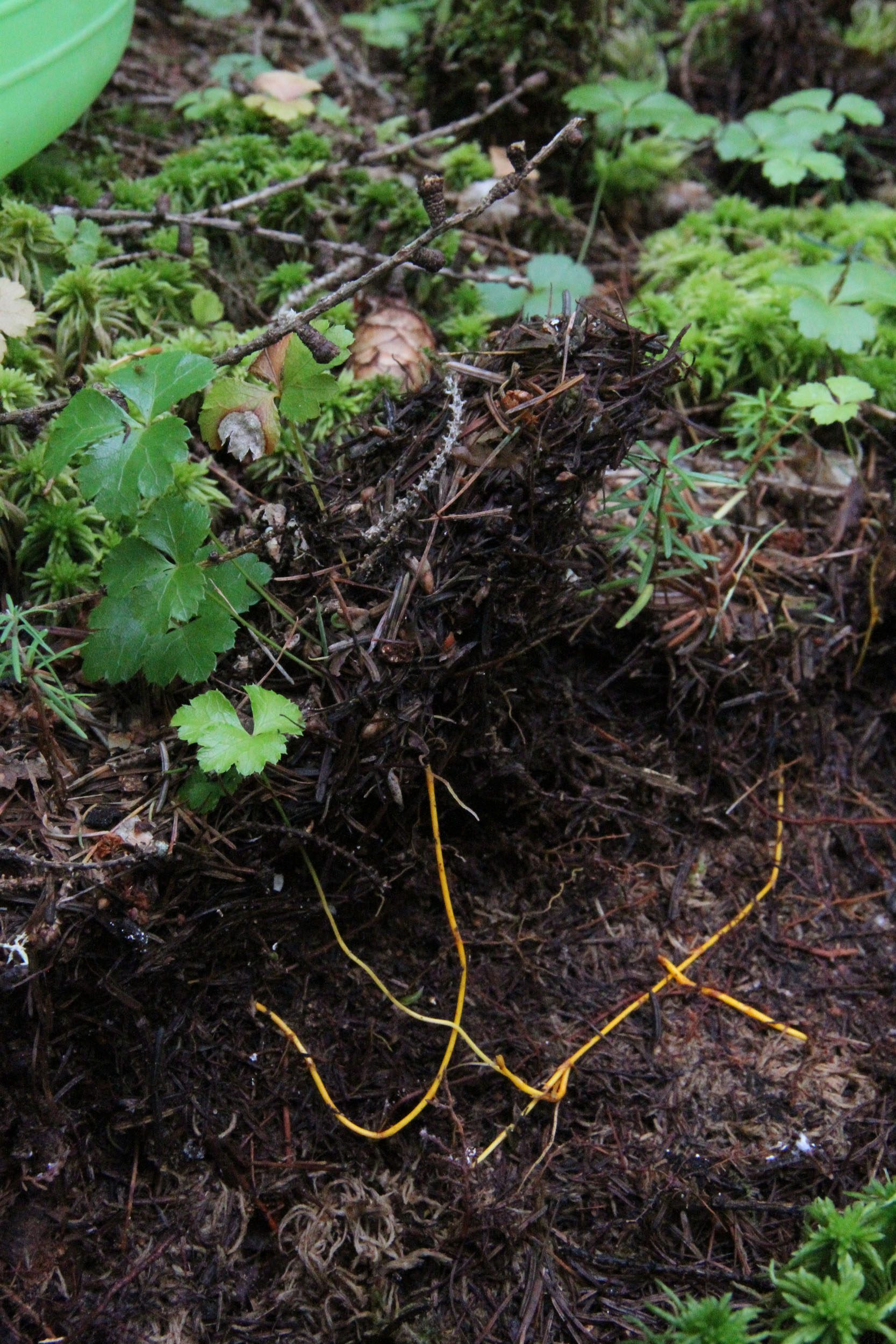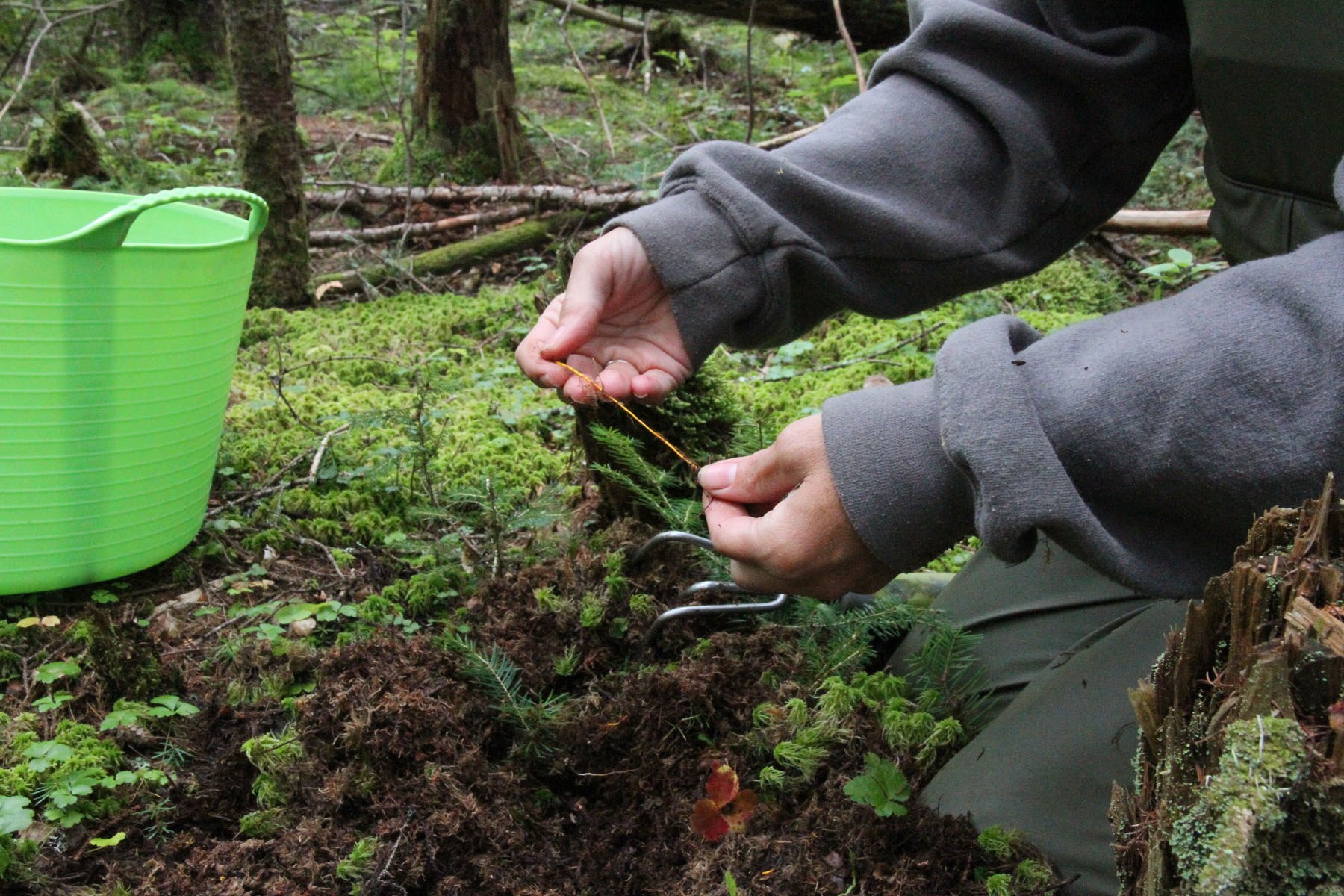You may have never seen it because it is quite small and unobtrusive. It grows in wet woods or on the moss in North American forests. Its Latin name, Coptis trifolia, reveals that it has three small leaves, not unlike those of strawberry plants or cilantro. It is also called Coptis groenlandica as it is native of the north.
We use the rhizomes of this herb, which resemble golden threads, whence its name. It is slow to grow and slow to harvest. Because it grows slowly and only in small patches, overharvesting endangers its future. That is why we cultivate it on our forest floor beside the garden.

Its rhizomes contain berberine, a very bitter yellow substance which is also present in goldenseal. In fact, the taste of both plants is similar and they have a few properties in common. If you run out of goldenseal, goldthread can replace it.
Goldthread is antiseptic, antibacterial and antifungal, good for all staph and strep infections, sore throats, pneumonia, vaginal infections, diarrhea and infections in general. It soothes mouth sores like ulcers, abcesses and gingivitis. It is an ingredient in our Gingivix tincture.
Like all bitter plants, goldthread puts movement in a slow digestive system. It increases the contractions of the digestive tract, which promotes the mixing of food in the stomach and the movement of waste to the exit. It increases all digestive secretions: saliva which softens food, thereby alleviating the stomach’s task, gastric acid which churns food and kills bacteria, digestive enzymes and bile that completely digest all food, and mucus that keeps the inside of the intestines nice and slippery.
Next time you walk in the forest, look carefully around the moss, you may glimpse some goldthread. You can admire its golden rhizomes but leave them in place to ensure its survival.


